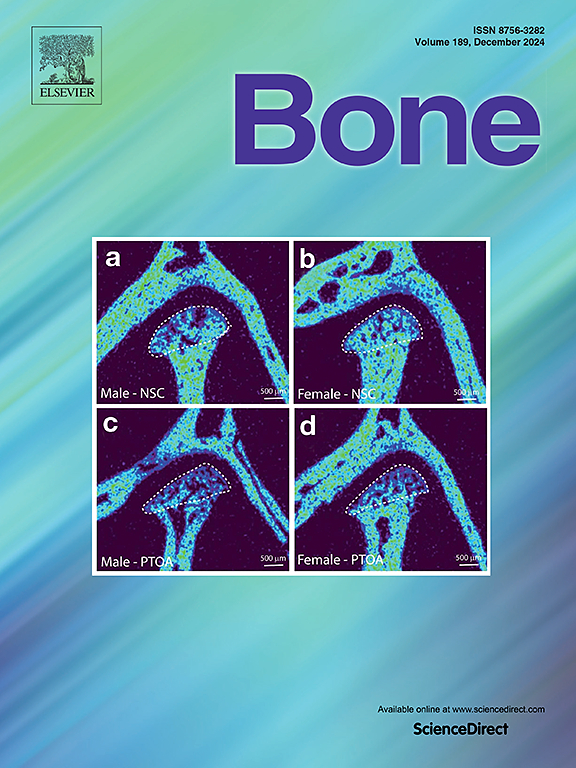早产个体的骨密度缺陷持续到青年期:DXA研究的系统回顾和荟萃分析。
IF 3.6
2区 医学
Q2 ENDOCRINOLOGY & METABOLISM
引用次数: 0
摘要
由于大多数骨骼矿物质的积累发生在妊娠的最后三个月,早产的个体骨缺损的风险增加。目前还不清楚早产是如何随着年龄增长而影响骨密度的,也不清楚早产是否会增加骨质疏松症的发病率。本系统综述和荟萃分析总结了目前双能x线吸收仪(DXA)测量的骨矿物质含量和密度的数据,这些数据是在一般健康的、适合胎龄的早产儿出生后的任何时间测量的。三个数据库,包括PubMed, Scopus和CINAHL,使用与早产和骨骼矿化相关的关键词进行检索。全身、腰椎和股骨颈是最常报道的DXA测量部位。荟萃分析共纳入了39项研究(145项比较),根据测量地点的不同,在出生后数天至30 岁之间测量骨骼结果。早产与骨矿物质含量和密度降低有关。在小于一岁的早产儿中观察到最大的全身骨骼缺损,在儿童期和青春期观察到更大的差异。在年龄最大的队列中(17-30 岁)早产的个体在接近骨量峰值年龄时骨密度仍然存在缺陷。重要的是,目前还没有针对30 岁以上早产儿的DXA研究,因此尚不清楚早产如何影响老年骨骼。本文章由计算机程序翻译,如有差异,请以英文原文为准。
Bone mineral density deficits in individuals born preterm persist through young adulthood: A systematic review and meta-analysis of DXA studies
Individuals born preterm are at increased risk for bone deficits given that the majority of skeletal mineral accrual occurs during the final gestational trimester. It is unclear how preterm birth affects bone density with aging or if individuals born preterm have increased rates of osteoporosis. This systematic review and meta-analysis summarizes the current data on bone mineral content and density measured by dual-energy x-ray absorptiometry (DXA) at any time across the lifespan after preterm birth in generally healthy, appropriate size for gestational age individuals. Three databases, including PubMed, Scopus, and CINAHL, were searched using keywords related to preterm birth and skeletal mineralization. Total body, lumbar spine, and femoral neck were the most frequently reported DXA measurement sites. A total of 39 studies (145 comparisons) were included in the meta-analyses, with bone outcomes measured within days of birth through about 30 years of age, depending on the measurement site. Preterm birth was associated with reduced bone mineral content and density. The largest total body bone deficits were observed in preterm individuals who were less than one year of age, with greater variability observed during childhood and adolescence. Individuals born preterm in the oldest cohort (17–30 years) maintained deficits in bone mineral density as they approached the age of peak bone mass. Importantly, there were no DXA studies of preterm individuals beyond 30 years of age, so it remains unclear how preterm birth affects the skeleton with advanced aging.
求助全文
通过发布文献求助,成功后即可免费获取论文全文。
去求助
来源期刊

Bone
医学-内分泌学与代谢
CiteScore
8.90
自引率
4.90%
发文量
264
审稿时长
30 days
期刊介绍:
BONE is an interdisciplinary forum for the rapid publication of original articles and reviews on basic, translational, and clinical aspects of bone and mineral metabolism. The Journal also encourages submissions related to interactions of bone with other organ systems, including cartilage, endocrine, muscle, fat, neural, vascular, gastrointestinal, hematopoietic, and immune systems. Particular attention is placed on the application of experimental studies to clinical practice.
 求助内容:
求助内容: 应助结果提醒方式:
应助结果提醒方式:


